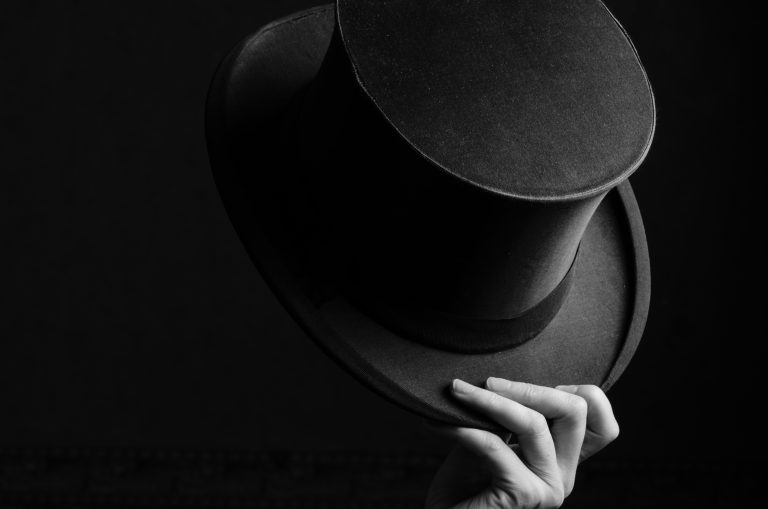Characters in Novels That Are Allies and Reflections
We’ve been looking at secondary characters in novels these past few weeks, and there is so much more to say about them. However, since we have six more key pillars of novel construction to cover the rest of this year, I’m only taking what I feel is a somewhat cursory glance at this very important pillar.
To me, characters are everything, and I put a lot of emphasis on creating complex, believable characters. And this is especially true when it comes to populating a novel with the three main types of secondary characters.
Secondary Characters Require Deep Development
Last week we looked at the first of three main character types novelists should populate their novels with—the nemesis. Sure, often you will have a cast of characters sprinkled through your story, each adding something to enhance the story. Sometimes those characters are just in the background, like extras in a movie. They are necessary, though, because you can’t, for example, have a big cocktail party with only your hero and three secondary characters. People at that party, who have “bit parts” or maybe just a few seconds of “screen time,” may add the texture and color needed to bring your scenes to life.
But those characters are fleeting and inconsequential. In contrast, the essential secondary characters are ones you carefully develop, for they impact your plot and protagonist in big ways (even if they appear to be minor). They should, as I mentioned in an earlier post, have lives of their own. They should have a core need, a fear or two, a lie they believe about themselves and the world, and their needs and dreams and desires should clash with your protagonist’s at times (some more than others, and some more often than others).
Secondary Characters Should Change and Grow
When we looked at the nemesis type, I cautioned about slipping into stereotype, which is a real problem with this kind of character. But this is also a danger for the other secondary character types in your novel. So I am going to tell you what I think is the key to creating genuine secondary characters: showing them changing and growing along with your protagonist.
Cool idea, right?
That doesn’t mean they change in the same way—not at all. Every character should have his or her own goal and character arc. But characters who never change or grow at all through a novel are kind of like Mary Poppins: “Practically perfect in every way.” A perfect antagonist, friend, ally, or romance character who starts off with a particular attitude, personality, mind-set, and who never changes at all or has one moment of self-doubt or contradiction or reversal in thought or behavior isn’t all that believable. And I see a lot of these in the novels I critique and edit.
I’ve said this before: people are complex, messy, contradictory, hypocritical, unpredictable. We humans are like the sea that tosses and churns. Well, maybe you know some people who are as steady as the rock of Gibraltar. At least they appear to be. Are they interesting though? Probably not. Only when they do something completely unexpected, even shocking, do they catch our interest.
Same goes for characters. Make them stagnant and watch the reader’s eyes droop and the snores start to slip out of her mouth. So, with that bit of introduction, let’s look at the next secondary character type found in a novel: the ally or reflection character.
Your Protagonist Needs an Ally
You’ll often see in movies or novels one main ally character. This is a character introduced early, usually at the outset of the story. Her role is clear—she’s there to support the hero, and stands by and helps as the hero goes after his goal. She may or may not also be a romance character, but often she is a friend who shares thoughts and feelings, gives advice, and may often be in conflict with the protagonist.
As in real life, we have allies—friends who are there for us. Some of us are blessed with terrific friends who will drop anything to come to our aid. And the best friends will call us out on our stuff if we are in the wrong or headed down a bad path. I remember when the slogan came out years ago: “Friends don’t let friends drive drunk.” That about sums up the sentiment. A good friend is a treasure, and if you can create at least one true ally character in your novel to stand by your protagonist, you will help raise your novel a notch in the realm of believability.
Like a Mirror
An ally character is sometimes called a “reflection.” I like this term because the best kind of friend will reflect back to you who you are. They are your mirror, and often when you can’t see yourself clearly (metaphorically speaking), they can and do reflect back to you what and how you really are. This role or behavior can be a great element in your novel in key places.
There are doors your protagonist must go through, hard choices he has to make. He might slip back, have fear and doubt, second-guess himself. Here’s where the reflection character comes in—to show the protagonist why and maybe how he can make it through the door. A romance character, too, often has the role of believing in the hero when he doesn’t. Giving him the push needed to keep going.
 We all wish we had true friends like that. And so, giving your hero a true friend who can help him reach his goal is a great type of character to have in your story. But here’s my caveat again: that character shouldn’t just be there to say the right words at the right time, every time. Don’t make her “practically perfect” Mary Poppins. Give her her own core need, fear, lie, goal. Give her a secondary plot that clashes with your protagonist’s.
We all wish we had true friends like that. And so, giving your hero a true friend who can help him reach his goal is a great type of character to have in your story. But here’s my caveat again: that character shouldn’t just be there to say the right words at the right time, every time. Don’t make her “practically perfect” Mary Poppins. Give her her own core need, fear, lie, goal. Give her a secondary plot that clashes with your protagonist’s.
Yes, Even Allies Should Clash
Consider your theme and come up with a problem she has that will set her on the opposite side of the “issue” from your protagonist. Let them clash at key moments. That’s real life. You might even have your secondary character be so angry she turns her back on your hero (or vice versa). In the dark moment before the climax, if you can make your hero lose everything he loves and have his entire support system (i.e., his allies) crumble, that’s a good thing. The more you can make the attaining of his goal seem hopeless, the better. And one great way to aid in creating that “dark night of the soul” moment is to have his closest friend turn on him or abandon him because of something said or done by the protagonist.
I mentioned that the key to creating great secondary characters is to show them changing and growing. Their interaction with the protagonist—the conflict, arguments, pain they suffer in dealing with the main character—should create change in attitude and behavior. By the end of the book, if you can have your ally character(s) now seeing life differently, feeling closer and having more understanding (and compassion) for your hero, the better.
Take the Time to Create These Characters
So don’t just throw in an ally or two into your novel as filler. Spend time crafting each character carefully. Give your allies rich, complex, unique personalities, background, and voices. Give them needs that clash with your hero’s. But make them loyal, even if they slip for a moment. They need to be there for your hero, stick by him, speak truth in love, reflect back what the hero needs to see in order to understand and move one step closer to his goal. Whether your ally is comedic relief, a serious therapist, or a nagging mother, that character has the hero’s best interests at heart; she means to help him reach his goal.
I’ll leave you with an intriguing remark Donald Maass wrote in Writing 21st Century Fiction: “The more unlike anyone else you make a character, the more universal that character will become.” He says that’s counterintuitive, and it is, right? But I agree with his assessment. We want our characters to be universal, so everyone can relate to them. But stereotyping them is not the way. Originality is. Infuse each secondary character—the nemesis, the ally, the romance character—all with originality, and your novel will stand out. Your pillar of support will be strong.
Any thoughts on the ally character? What role do you see allies playing in novels, and what do you like best about them? Do you have a great ally in your novel you’d like to share something about?
Inspection checklists:
Inspection Checklist 1-concept with a kicker
Inspection Checklist 2-protagonist with a goal
Inspection Checklist 3-conflict with high stakes
Inspection Checklist 4-theme with a heart
Inspection Checklist 5-Plots and Subplots in a String of Scenes












Thank you for your consistently insightful, smart and substantive posts. In my opinion, yours is one of the best, most helpful, well-written blogs on novel writing.
Your posts about characters are particularly helpful for me right now. I am starting a new book, and I am spending a lot of time writing character profiles. Sometimes it’s frustrating because I want to “start writing.” But I don’t see how else I could create round characters otherwise.
My protagonist does have a best friend who is an ally. The characters are teenagers, and the ally is a seemingly fearless daredevil always pushing his friend, the protagonist, to take risks. In the end, when the MC decides to take the biggest risk of all and leave home, the ally pushes back. Using your formula of need = fear = lie, it turns out that the ally character is deeply afraid of change and of taking responsibility for his life as he passes from adolescence to adulthood. When his friend, the MC decides to leave home, his decision threatens the lie he has come to believe about himself: That he can never successfully transition to being a mature adult. The thing he needs, which is to make that transition, is the thing he fears.
That’s great character development, and when you work on these main characters this way, it makes your job as a writer easier, for by understanding each one’s motivation, there isn’t much question how they will act and what they will say. They will always be “in character” because you understand where they’re coming from and what they want more than anything. I learned a lot from reading Elizabeth George’s novels. She is a master at creating characters with intense needs and passions, even all the minor characters. Her book, Write Away, has greatly influenced the way I develop characters. You might enjoy going through that if you don’t have it.
Wonderful post. Thank you. My protagonist is an eleven-year old homeless girl who searching for her mom on the mean streets, who recently disappeared. Her ally is a twelve-year boy who helps on the journey. Because he’s so different from her, she sees aspects of herself that she doesn’t always like. And you’re right. Allies make powerful mirrors for the reader.
Thank you for your helpful posts. I am working on my debut paranormal/mystery novel, and also working on the characterization. I am trying to populate the story with secondary characters, and this helps a lot. The ally character was missing, and I think that will make it easier to get over the hump I was feeling. I was feeling a bit stuck, now I have something to work with, so thanks again! I have a question that I hope will clarify another problem. What is the difference between secondary and minor characters? Am I correct in assuming that secondary characters are named because they help the protagonist and move the plot forward, while minor characters are more of a “place setting” but are less important and they are not named? Thank you for all your help for all of us “newbies!” 🙂
Thank you for the interesting points. I am always interested in learning more about story construction and your site is marvelous for that. When your characters grow along with the protagonist, do you ever worry that they are being forced to change against their nature. For me, my stories seem to exist somewhere and by writing them I’m excavating them. I think Stephen King talked about this concept. That said, doesn’t story construction kind of take the opposite approach?